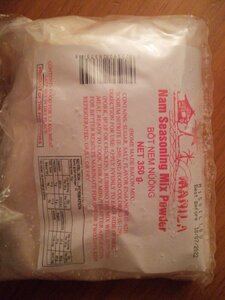- Aug 28, 2021
- 4
- 1
Hello guys. Im a newbie into this. I want to ask some questions about the curing salt. So I put 5 teaspoon #1 curing salt in 9.039 pounds of meat accidentally. Is it still safe to eat or not? I'm worried about this. So i wouldn appreciate your answers or knowledge to this craft. Thank you so much for those who want to help.
Ps. I'm also not sure if it's cure #1 so I can't sleep because I don't know the answer. Says Nam Seasoning mix Powder
Ps. I'm also not sure if it's cure #1 so I can't sleep because I don't know the answer. Says Nam Seasoning mix Powder





